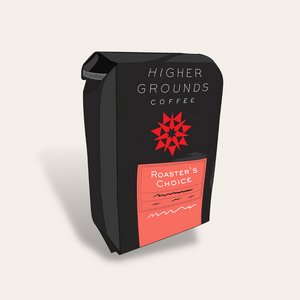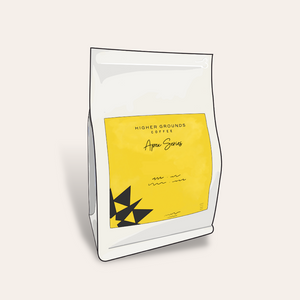Brewing perfect coffee at home is by no means an easy endeavor. It requires patience, practice, and dedication. There are also plenty of variables to consider, from grind size and water temperature to brewing times, methods, and ratios.
While this can be intimidating for the inexperienced, starting out by investing in high-quality equipment is a great first step. The tools at your disposal will dictate how well you’re able to brew coffee, and they will provide you with the basis to practice and hone your craft.
Here are a few tips for improving your home coffee setup to brew the best possible cup.

First things first: Your brewing method
There’s an almost endless range of coffee brewing methods out there to choose from, and each one has its own unique characteristics. To start with, pick one that suits your tastes. This means thinking about the flavor profiles you enjoy in your coffee.
For a clean and mellow profile, percolation or pour over brewing methods like the Hario V60, Fellow Stagg X, and the Chemex are excellent options. If you want something heavier, immersion methods like the Clara French press or the AeroPress enhance the mouthfeel of a cup. Meanwhile, the Clever Dripper offers something of a middle ground between these two distinctive styles.
Experimenting with different brewing methods is also a good idea. Each has its own unique characteristics and will give coffee a unique and distinctive flavor.
What about the rest of your equipment?
After choosing a brewing method, you’ll want to take a closer look at the rest of your coffee setup. While it might require a little investment, buying quality equipment will make a huge difference to the end result.
Grinder
To maximize freshness, you should always buy whole bean coffee and grind it fresh for each cup.
There are two main types of grinder: burr and blade. The difference is in the name: blade grinders use blades to slice and chop the beans, while burr grinders use burrs to crush and shear them.
Although they are much more affordable, blade grinders are often less consistent. This means you’ll end up with much more variance in the size of your particles, and subsequently causes extraction to become less even.
On the other hand, burr grinders, like the Hario Skerton pictured above, are more consistent and precise. This means that your extraction will be more even when you brew, resulting in a more balanced flavor.
Kettle
While it might not seem that important, using a high-quality kettle can actually make a huge difference when brewing coffee. The Specialty Coffee Association sets out some exacting guidelines for water quality and temperature, as both factors affect extraction and final cup profile. We like the Hario Buono for an electric version as well as the stovetop-friendly Fellow Raven for its versatility and sleek lines.
Temperature-controlled kettles are preferable, but they are also more costly. They offer the advantage of allowing you to control temperature down to the degree (between 198°F and 202°F is best).
Whether you go for a temperature-controlled model or not, it’s still worth investing in a gooseneck kettle. Thanks to their long, thin, curved spout, these kettles produce a gentler, more accurate stream of water.
This means a more precise pour, which allows you to control flow rate and overall brew time to get the best out of your coffee.
 Scale
Scale
Coffee-to-water ratios are important. This means that you should accurately measure the amount of water and coffee you use when brewing.
To do so, invest in a scale like this CJ-4000 digital version for weighing your beans as well as pouring water into your brewer. This will ensure that you are consistent, and remove any guesswork from the process of brewing coffee – eliminating imprecision and any margin for error. (Bonus: a scale comes in handy for other kitchen tasks like baking as well!)
Filtered water
Although it isn’t strictly a piece of equipment, your brewing water is not something that should not be overlooked.
At a microscopic level, tap water contains many different contaminants and minerals such as magnesium, potassium, and calcium. The exact levels vary depending upon your area, and will affect the final cup profile if they are too high or too low.
As a general rule, you should look to use clean and odorless filtered water. You should be able to find water hardness testing strips at your local hardware store. These will tell you whether your tap water is suitable for brewing or not. If not, consider investing in a filter jug – you’ll find it makes a surprising difference.
Storage
Roasted coffee is volatile, and over time it loses its freshness, vibrancy, and aroma. Maximizing freshness is important if you want to enjoy your coffee at its absolute best.
Coffee’s greatest enemies are oxygen, moisture, heat, and light. As such, keeping your beans in a dark, dry, and cool place--like the MiiR airtight canister pictured above--will help to preserve their flavor.
It’s also important to note that retail packaging sometimes isn’t ideal for long-term storage. The best thing to do is buy from a roaster that ships coffee in airtight bags with degassing valves, but if not, you can also store beans in other hermetically sealed containers – like mason jars, for instance.
The final piece of the puzzle: Good coffee
No matter how good your coffee brewing setup is, there’s always one limiting factor: the coffee you buy.
To brew the best cup you can, look for high-quality specialty coffee beans from roasters (like HG! but of course there are others!) who commit to ethical sourcing practices.
It’s also worth remembering that coffee is diverse. There are many different origins, varieties, roasts, and processing methods to choose from, and all of these have their own impact on flavor.
For instance, if you’re looking for bold or earthy flavors, try a medium-dark roast, like our Funky Mamacita. If brightness and clarity with a little sweetness is what you’re after, our organic light-medium Justice blend has notes of vanilla and citrus.
Whichever coffee you choose, remember that it's also important to be informed about how it got to you. The best coffees don’t just benefit you, they benefit those at origin, too. Look for beans that have been sourced ethically and purchased at a fair price.

Making a great cup of coffee can be complicated, but it’s not as daunting as it might seem at first glance.
By improving your home brewing setup, you’ll be able to prepare coffee with more precision and consistency – meaning that it tastes better when you drink it.






